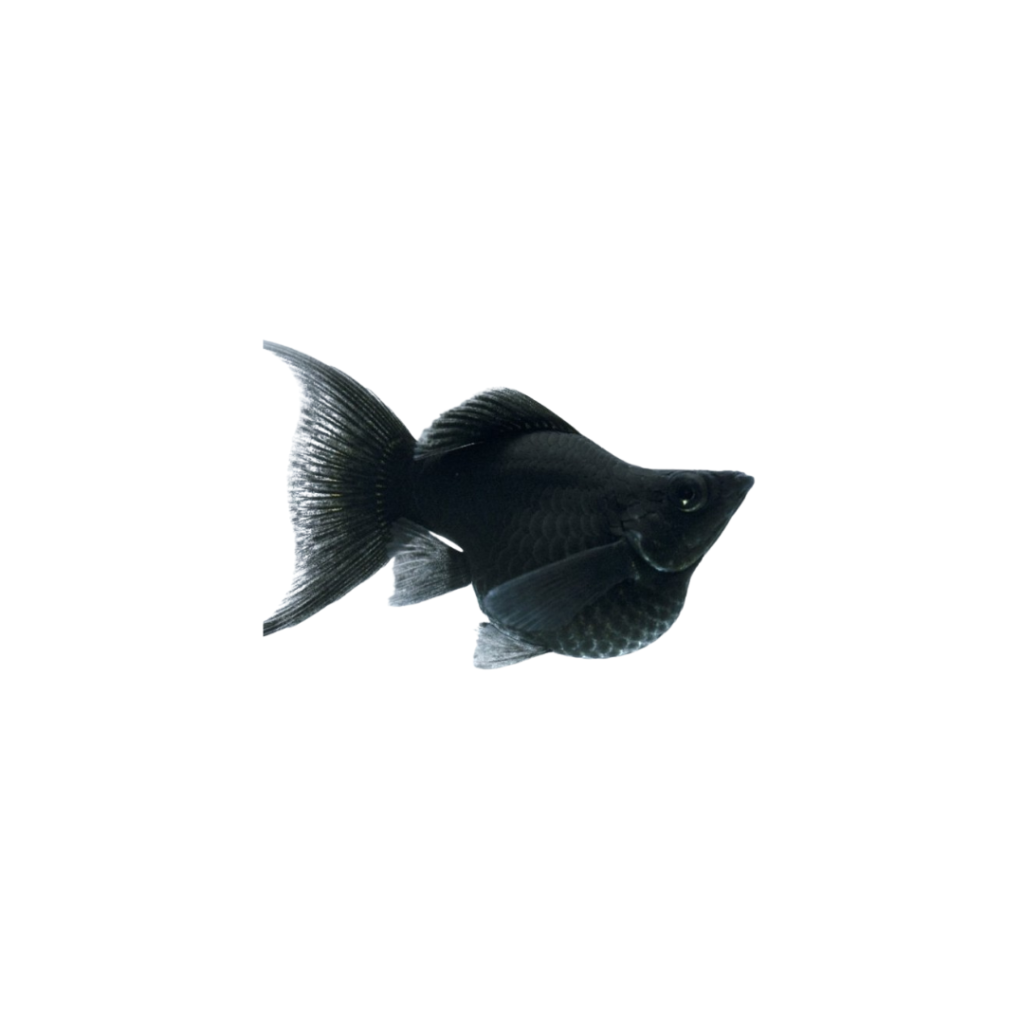Guppy Japan Double Slayer
Poecilia reticulata

Description
The Guppy Japan Double Slayer is a captivating variety of guppy, known for its distinctive color pattern and energetic personality. This guppy variety is often characterized by a bright and bold combination of colors, typically featuring vibrant shades of blue, orange, and yellow with striking tail and fin patterns. The “Double Slayer” part of the name refers to the guppy’s unique double tail fins, which are larger and more pronounced than typical guppy tails, giving them a graceful and symmetrical appearance when they swim.
Habitat Origin
The Guppy Japan Double Slayer is a selectively bred variety of the common guppy (Poecilia reticulata), which is native to freshwater rivers and streams in South America, especially in regions like Venezuela, Guyana, and Trinidad. Guppies have been bred for their vibrant colors and patterns for generations, and the Japan Double Slayer variety was specifically developed in Japan to enhance the coloration and tail fin structure.
Aquarium
Ideal Number in Aquarium: Best kept in groups of at least 4 – 6 individuals. Keeping them in groups allows for natural schooling behavior and reduces stress.
Favorite Food

The Guppy Japan Double Slayer is an omnivorous fish that enjoys a variety of foods. They can be fed flake food, micro pellets, and live or frozen foods such as brine shrimp, daphnia, bloodworms, and grindal worms. They also appreciate vegetable-based foods like spirulina, blanched spinach, lettuce, and peas. A varied diet ensures that they maintain vibrant colors and overall health.
Behavior:
The Guppy Japan Double Slayer is a peaceful and active fish, often swimming around the tank in schools. Males may show off their colorful tails to attract females, especially during breeding periods. While males may occasionally exhibit some territorial behavior around mates, their aggression is generally minimal, and they do not harm each other.
Special Care:
Guppy Japan Double Slayers are relatively easy to care for, making them great for both beginner and experienced aquarists. However, they do require stable water conditions with good filtration to maintain water quality. Regular water changes (at least 20-30% weekly) are important to keep ammonia and nitrate levels low. A gentle filtration system is ideal, as strong water currents can stress these small fish.
Compatibility with Other Fish:
Guppy Japan Double Slayers are peaceful and can be kept with other small, non-aggressive fish. They are compatible with other guppy varieties, neon tetras, harlequin rasboras, small catfish like Corydoras, and other small livebearers. They should not be kept with larger or more aggressive species like bettas, cichlids, or goldfish, as these could harm or stress the guppies.
Breeding Tank Setup
Although Guppy Japan Double Slayer can breed in a community tank, using a separate 10–20 gallon breeding tank is highly recommended to protect the fry and better manage water parameters. Ideal water conditions include a pH of 7.0–7.5, temperature between 24–28°C (75–82°F), and hardness of 8–12 dGH. A sponge filter provides gentle filtration without stressing the fish or sucking in fry. Substrate can be fine gravel or soft sand, with plants like Java moss and Anubias offering shelter and encouraging biofilm growth. Moderate lighting with a 10–12 hour cycle supports natural rhythms and plant health.
Conditioning for Breeding
Feed a protein-rich, varied diet including high-quality flakes, live foods such as brine shrimp and daphnia, and occasional frozen foods like bloodworms. Maintain water quality with weekly 20–25% water changes using dechlorinated water matching tank temperature. Increasing water change frequency before breeding can help stimulate spawning.
Spawning Process
Guppy Japan Double Slayer are livebearers and can breed year-round under optimal conditions. Females carry fertilized eggs internally for about 28–30 days before giving birth to 20–50 fully formed fry. It’s advisable to separate pregnant females from males before birth to reduce stress and prevent remating. Males display vibrant colors and court females during spawning.
Fry Care & Feeding
Fry are born ready to swim and immediately feed on biofilm and microorganisms. Supplement their diet with powdered fry food, baby brine shrimp, or finely crushed shrimp food. Maintain excellent water quality with daily small water changes (10–20%), keeping temperature stable within 24–28°C to promote healthy growth and reduce stress.
Additional Notes on Breeding
Sexual maturity occurs around 3–4 months. Males are smaller and more colorful with elongated tails, while females are larger and rounder, especially when gravid. To ensure successful breeding, avoid overcrowding, sudden water parameter changes, and aggressive tankmates. A calm, stable environment is essential for healthy fry and breeding success.
